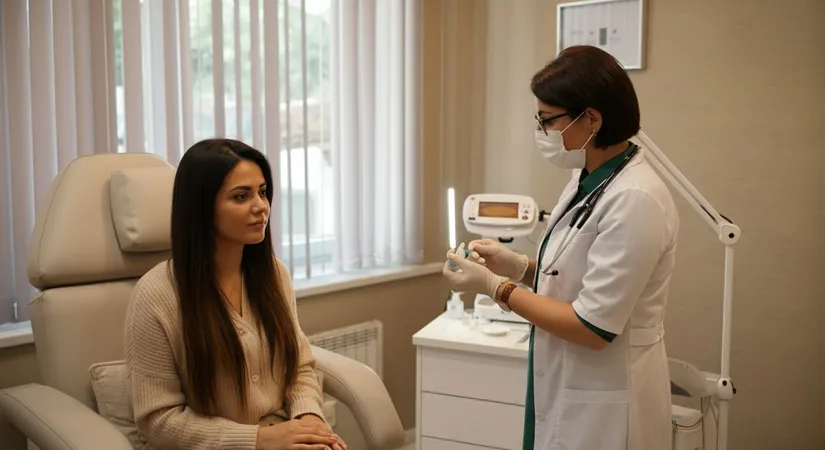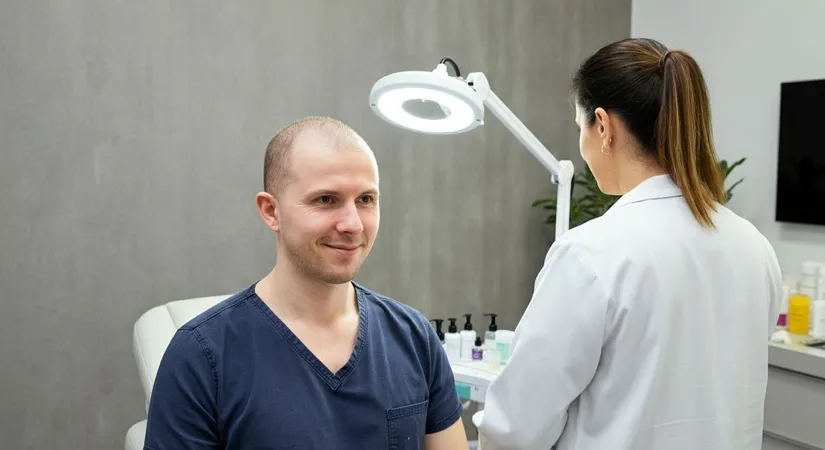Discover the transformative power of PRP treatment for hair and skin. Learn how platelet-rich plasma therapy can rejuvenate and restore naturally.
Platelet-Rich Plasma (PRP) treatment is revolutionizing the field of regenerative medicine, offering promising solutions for hair loss, skin rejuvenation, and more. As a cutting-edge therapy, PRP harnesses the body's natural healing processes, making it a popular choice for those seeking non-invasive treatments. This comprehensive guide explores the intricacies of PRP therapy, its applications, and the science behind its effectiveness. Whether you're considering PRP for hair restoration or skin enhancement, understanding the role of growth factors and the latest innovations in this field is crucial. Join us as we delve into the world of PRP treatment and uncover what the future holds for this transformative therapy.
PRP therapy, or Platelet-Rich Plasma therapy, is a cutting-edge treatment that leverages the body's natural healing processes. By concentrating platelets from a patient's own blood, PRP therapy enhances tissue repair and regeneration. This approach is particularly effective in dermatology, orthopedics, and sports medicine.
Platelets, a component of blood, are rich in growth factors that stimulate cell proliferation and tissue regeneration. This makes PRP therapy a powerful tool in regenerative medicine, offering a natural alternative to more invasive procedures. For instance, athletes often use PRP therapy to recover from injuries faster, while dermatologists apply it to improve skin texture and elasticity.
One unique aspect of PRP therapy is its minimal side effects, as it uses the patient's own blood, reducing the risk of allergic reactions. This makes it a preferred choice for those seeking natural healing methods.
This process is straightforward and usually completed within an hour, making it convenient for patients. The effectiveness of PRP therapy varies, with some experiencing immediate benefits, while others notice gradual improvements over weeks.

PRP therapy for hair loss involves injecting platelet-rich plasma into the scalp, targeting hair follicles. This stimulates the follicles, promoting new hair growth and strengthening existing strands. The growth factors in PRP enhance blood circulation, nourishing the scalp and encouraging healthier hair.
For example, individuals with androgenic alopecia have reported noticeable improvements in hair density and thickness after undergoing PRP therapy. Additionally, PRP can be combined with other treatments, such as microneedling, to further boost its effectiveness.
In skin rejuvenation, PRP therapy enhances collagen production, which is crucial for maintaining skin elasticity and firmness. The growth factors in PRP stimulate fibroblast activity, leading to improved skin texture and reduced wrinkles.
Patients often notice a more youthful appearance, with smoother skin and diminished fine lines. For instance, those with acne scars have experienced significant improvements in skin tone and texture after PRP treatments. This makes PRP a versatile option for addressing various skin concerns.
PRP therapy's minimally invasive nature and long-lasting results make it a preferred choice for those seeking natural solutions for hair and skin rejuvenation. Its ability to harness the body's own healing mechanisms offers a unique advantage in regenerative medicine.

Growth factors are critical components in PRP therapy, significantly influencing the healing process. These proteins, found in platelets, are concentrated in PRP treatments to enhance tissue repair and regeneration. By directly delivering growth factors to the injury site, PRP therapy accelerates the body's natural healing mechanisms.
For instance, in orthopedic applications, PRP therapy has been shown to improve recovery times for tendon injuries. Similarly, in dermatology, growth factors in PRP help reduce recovery time for skin rejuvenation procedures. These examples highlight the versatility and effectiveness of PRP therapy across various medical fields.
These functions make growth factors indispensable in regenerative medicine, offering new possibilities for treating chronic conditions and injuries. The ability to harness these natural proteins positions PRP therapy as a cornerstone in the advancement of regenerative treatments.
These steps ensure that PRP therapy is tailored to each patient's needs, maximizing the benefits of growth factors. By continuously evaluating and refining treatment approaches, healthcare providers can enhance the outcomes of PRP therapy, making it a reliable option for regenerative medicine.
The field of PRP therapy is continuously evolving, with new techniques and applications emerging regularly. Recent innovations include the development of more precise delivery methods, such as microneedling combined with PRP for enhanced skin rejuvenation. This technique allows for better penetration of growth factors, improving skin texture and elasticity.
Additionally, research is ongoing into the use of PRP in combination with other regenerative treatments, such as stem cell therapy, to further enhance its effectiveness. This combination has shown promise in accelerating healing processes and improving outcomes in various medical fields, including orthopedics and dermatology.
As technology advances, the potential applications of PRP therapy are expected to expand, offering even more solutions for patients seeking natural and effective treatments. These innovations could revolutionize how PRP therapy is utilized, making it a cornerstone in regenerative medicine.
These advancements highlight the dynamic nature of PRP therapy, promising a future where treatments are more effective and tailored to individual patient needs. As the understanding of PRP's mechanisms deepens, its role in healthcare is likely to become even more significant.
Discover the Luxury of Sustainable Living at Le Méridien Residences Bodrum
📞 Call Now for a Free Consultation